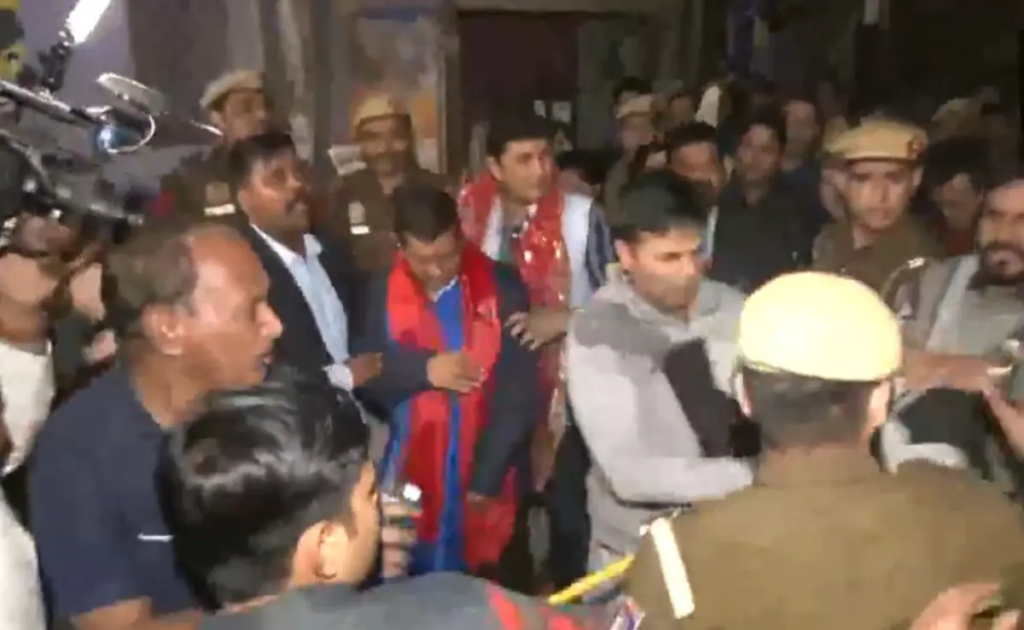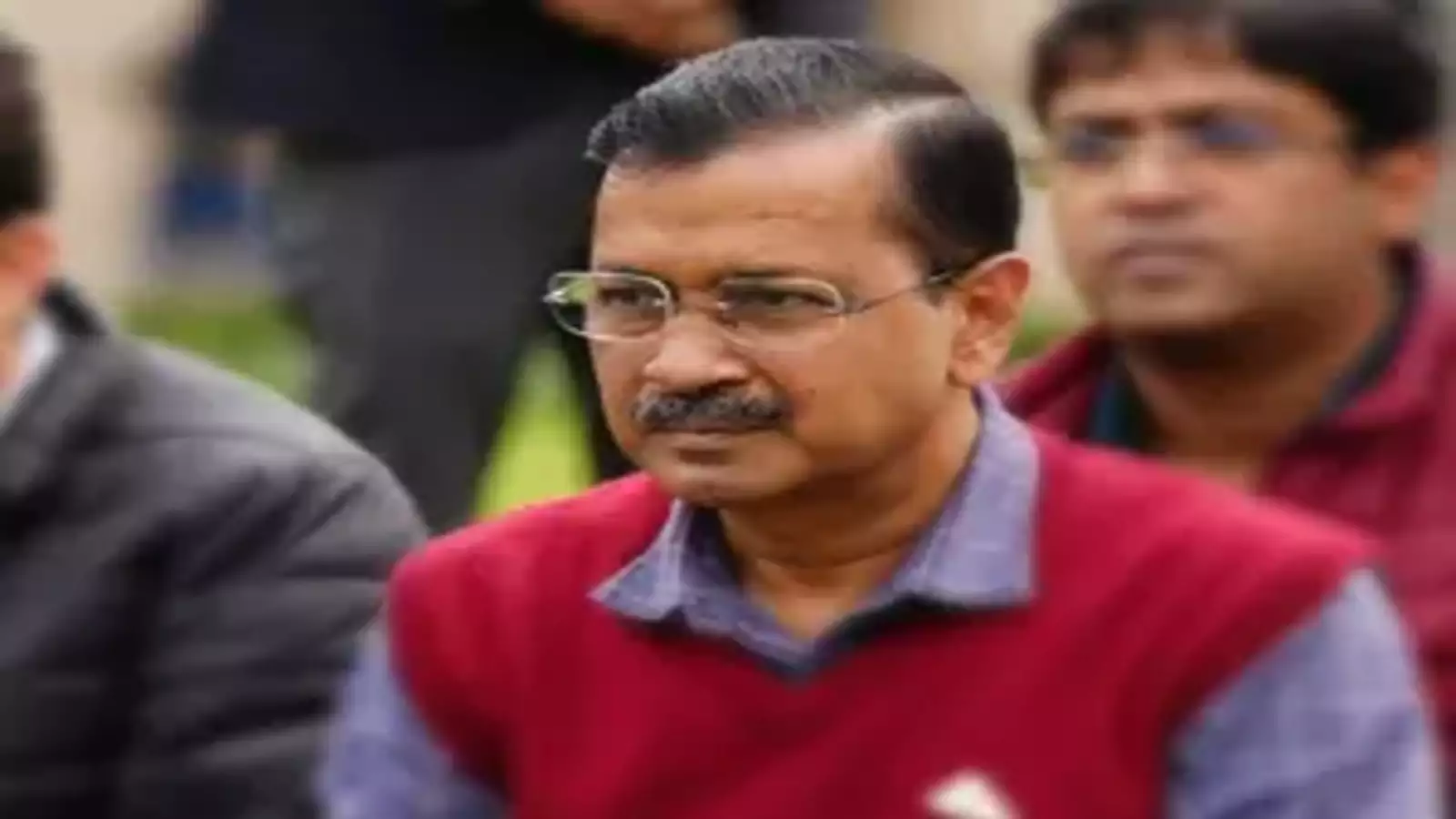The Attack on Kejriwal, former Chief Minister of Delhi and leader of the Aam Aadmi Party (AAP), has once again brought the state of law and order in the national capital under scrutiny.
On a seemingly ordinary campaign day in Greater Kailash, high drama unfolded when a man from the locality threw a liquid at Kejriwal, igniting political tensions and raising serious security concerns.
The episode has sparked a heated debate between political parties, each blaming the other for the incident, while citizens remain concerned about their safety in an increasingly volatile environment.
Attack on Kejriwal Caught on Camera
The attack took place in Delhi’s affluent Greater Kailash area during Kejriwal’s campaign. Video footage shared by news agencies shows the chaos that ensued as a man approached Kejriwal and threw an unknown liquid at him. Security personnel acted swiftly, overpowering the assailant before he could cause further harm.
Kejriwal, visibly shaken, was seen wiping his face as his supporters gathered around him in concern and shock. The man, reportedly a resident of the same area, was quickly detained and taken to the local police station for questioning.
The visuals from the scene highlight the tense atmosphere, with supporters and security staff clashing with the attacker. It underscores not only the vulnerability of political leaders but also the palpable sense of insecurity in the public sphere.
Read : Delhi to San Francisco in 40 Minutes: Now Possible with SpaceX Starship
The incident is a stark reminder of the increasing risks faced by political figures, particularly in an environment charged with political rivalry and polarization.
Political Fallout: Blame Game Intensifies
In the aftermath of the incident, the Aam Aadmi Party wasted no time in pointing fingers at the Bharatiya Janata Party (BJP). Senior AAP leader and Delhi minister Saurabh Bharadwaj condemned the attack, highlighting a series of recent incidents that, according to him, demonstrate a breakdown of law and order in the capital.
Bharadwaj referenced violent crimes in the city, including a gym owner’s murder in Greater Kailash and a stabbing in Panchsheel Park, as evidence of the central government’s failure to maintain security.
“Regular attacks are being carried out on Arvind Kejriwal,” Bharadwaj asserted, citing previous incidents in Nangloi and Chhatarpur where Kejriwal was allegedly targeted.
BJP ने कराया केजरीवाल जी के ऊपर हमला‼️
— Sumit Hindustani (@SumitGarg_) November 30, 2024
आज पदयात्रा के दौरान BJP ने @ArvindKejriwal जी के ऊपर हमला कराया है। दिल्ली में कानून व्यवस्था ध्वस्त हो चुकी है और केंद्र सरकार, गृह मंत्री कुछ नहीं कर रहे हैं।#KejriwalAttackedByBJP pic.twitter.com/Zl1mrpQX7B
He criticized the central government for what he described as selective inaction, pointing out that BJP leaders conduct rallies without facing similar threats. According to Bharadwaj, this discrepancy underscores a deeper issue of political bias in law enforcement.
The BJP, on the other hand, has denied any involvement, dismissing the accusations as politically motivated. Party spokespersons have accused AAP of using the incident to deflect attention from other pressing issues in Delhi, such as governance and administration.
The BJP maintains that law enforcement is doing its job and that security lapses, if any, need to be addressed through institutional reforms rather than political mudslinging.
Broader Implications: Law and Order in the Spotlight
The attack on Kejriwal raises serious questions about the state of law and order in Delhi. The capital has seen a worrying rise in violent crimes, and high-profile attacks like this one only deepen public anxiety.
If a former Chief Minister, with a full security detail, can be attacked in broad daylight, what does that say about the safety of ordinary citizens? This question lies at the heart of the current debate, with AAP positioning itself as the voice of the people, demanding accountability from the central government.
Security analysts argue that the incident reflects a broader trend of increasing political violence in India. As political competition intensifies, so too does the rhetoric, creating a volatile atmosphere where acts of aggression become more common.

Ensuring the safety of political leaders is not just about protecting individuals but about safeguarding democratic processes. When politicians are attacked, it sends a chilling message about the state of democracy and the lengths to which some might go to silence opposition voices.
Public reactions to the incident have been mixed. While AAP supporters express outrage and concern, others question the party’s narrative, suggesting that it might be leveraging the incident for political gain. Regardless of political affiliation, however, there is a consensus that such attacks are unacceptable and that stronger measures are needed to prevent them.
The role of law enforcement also comes under scrutiny. Critics argue that the police need to be more proactive and impartial, ensuring that security protocols are strictly followed, regardless of political considerations.
The incident in Greater Kailash should serve as a wake-up call, prompting a reevaluation of existing security measures and the implementation of stricter protocols to protect public figures and ordinary citizens alike.
The attack on Arvind Kejriwal in Delhi’s Greater Kailash area is more than just an isolated incident; it is a symptom of deeper issues plaguing the city’s law and order system. The political blame game that has followed only adds to the confusion and does little to address the real concerns of citizens who worry about their safety in an increasingly unstable environment.
As the investigation unfolds, one thing is clear: incidents like this cannot be allowed to become the norm. Protecting political leaders and ensuring public safety must be a priority, and it requires a concerted effort from both state and central authorities to restore confidence in the system.
let’s enjoy few years on earth with peace and happiness….✍🏼🙏

